
Date: October 5, 2010. Location: Hickory Hill (41°40'12" N 91°30'27" W)
| Classification Hierarchy | |
| Kingdom | Plantae |
| Subkingdom | Tracheophyta |
| Superdivision | Spermatophyta |
| Division | Magnoliophyta |
| Class | Magnoliopsida |
| Subclass | Asteridae |
| Order | Asterales |
| Family | Asteraceae |
| Genus | Cirsium |
| Species | Cirsium vulgare |

Date: October 5, 2010. Location: Hickory Hill (41°40'12" N 91°30'27" W)
Scientific Name: Cirsium vulgare (syn. Cirsium lanceolatum)
Common Name: Bull thistle
Origin: Alien
Notes: Designated a "Primary Noxious Weed" by Iowa weed law.
Biennial, flowering stems arising from last years rosettes. Sometimes the rosette stage is omitted.
A distinctive characteristic of this aggressive plant is the habit of spiny leaf margins growing down the stem.
Additional references: 1, 2, 3, 4, 5, 6, 7, 8, 9, 10, 11, 12, 13.
Flowers: June; Purple-pink; flowers perfect, nectaries at the base of disc florets, ray florets lacking; involucre 3-4 cm high; phyllaries arachnoid at base growing into narrow rigid to spreading spines, abaxial faces lacking glutinous ridge.
Leaves: alternate, simple, pinnately lobed; spiny wings, originating from leaf bases, extend down the stem nearly to the next leaf node; bristle like spines on adaxial leaf surface (see FNA), abaxial surface pubescent.
Glossaries of botanical terms: 1, 2, 3, 4, 5, 6, 7, 8, 9, 10.

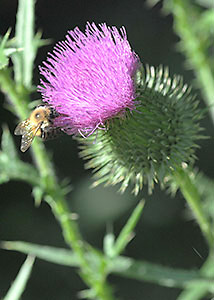
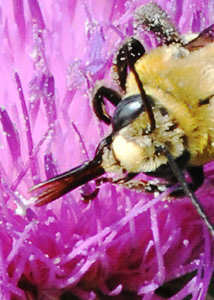
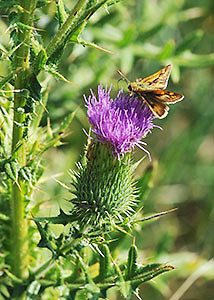


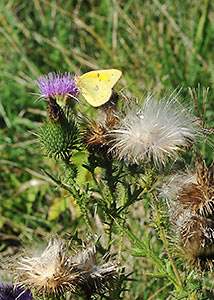
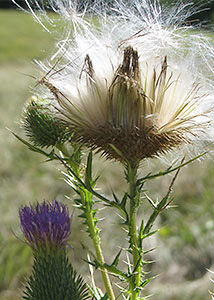
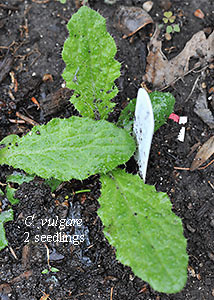
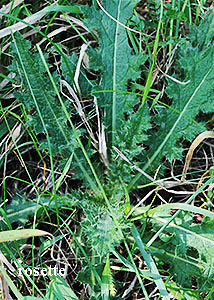
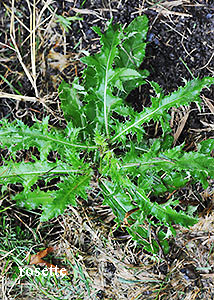
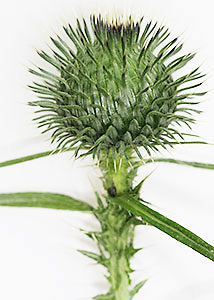
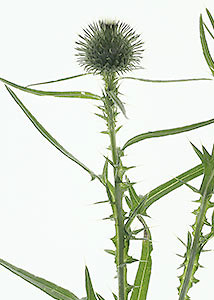
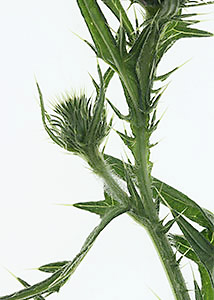

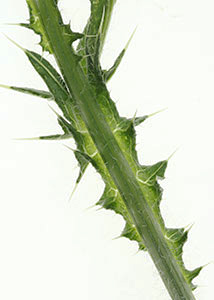
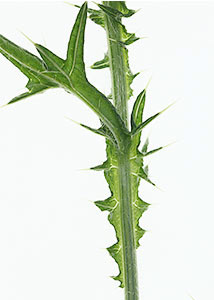
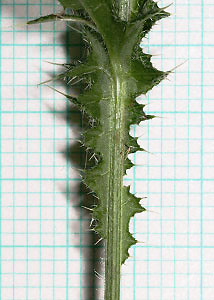
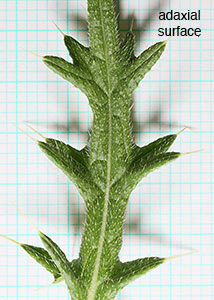

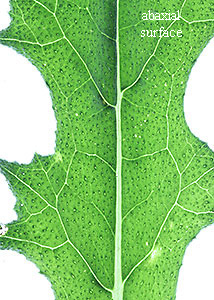
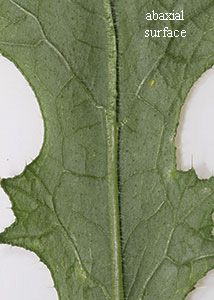


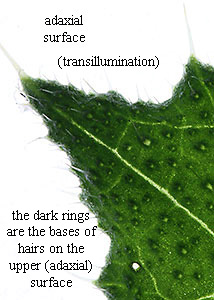
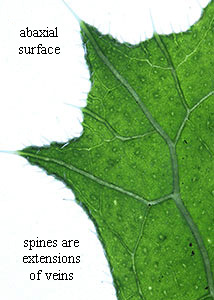

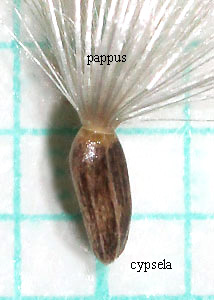
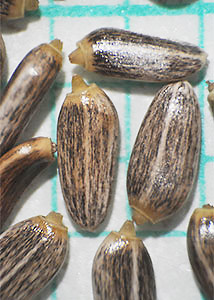

Comments: Bull Thistle(Cirsium vulgare) is a biennial so I was surprised when I planted a few seeds (cypsela, actually) in the autumn of 2013 and a flowering plant came up quickly in the spring of 2014, skipping the expected rosette phase. Cypesela from field thistle (Cirsium discolor), planted at the same time, produced the expected large leaved rosette.
I didn't want to share the Bull thistle's offspring with the neighbors so I only allowed one plant to grow in my garden and I removed the seed heads when they had mature cypeselae. That one plant was the most popular plant in the garden with insects and birds. When one of the floral heads would open in the morning it would be mobbed by bees and butterflies. A hummingbird would stop by occasionally and when the head would close up after a day or two it would be visited by goldfinches. The goldfinches wouldn't wait for the heads to dry and open to release the thistle down (pappi). Instead, they would pull apart the heads and tug at the pappi until they came loose leaving the immature cypselae behind still attached to the receptacle at the base of the head.